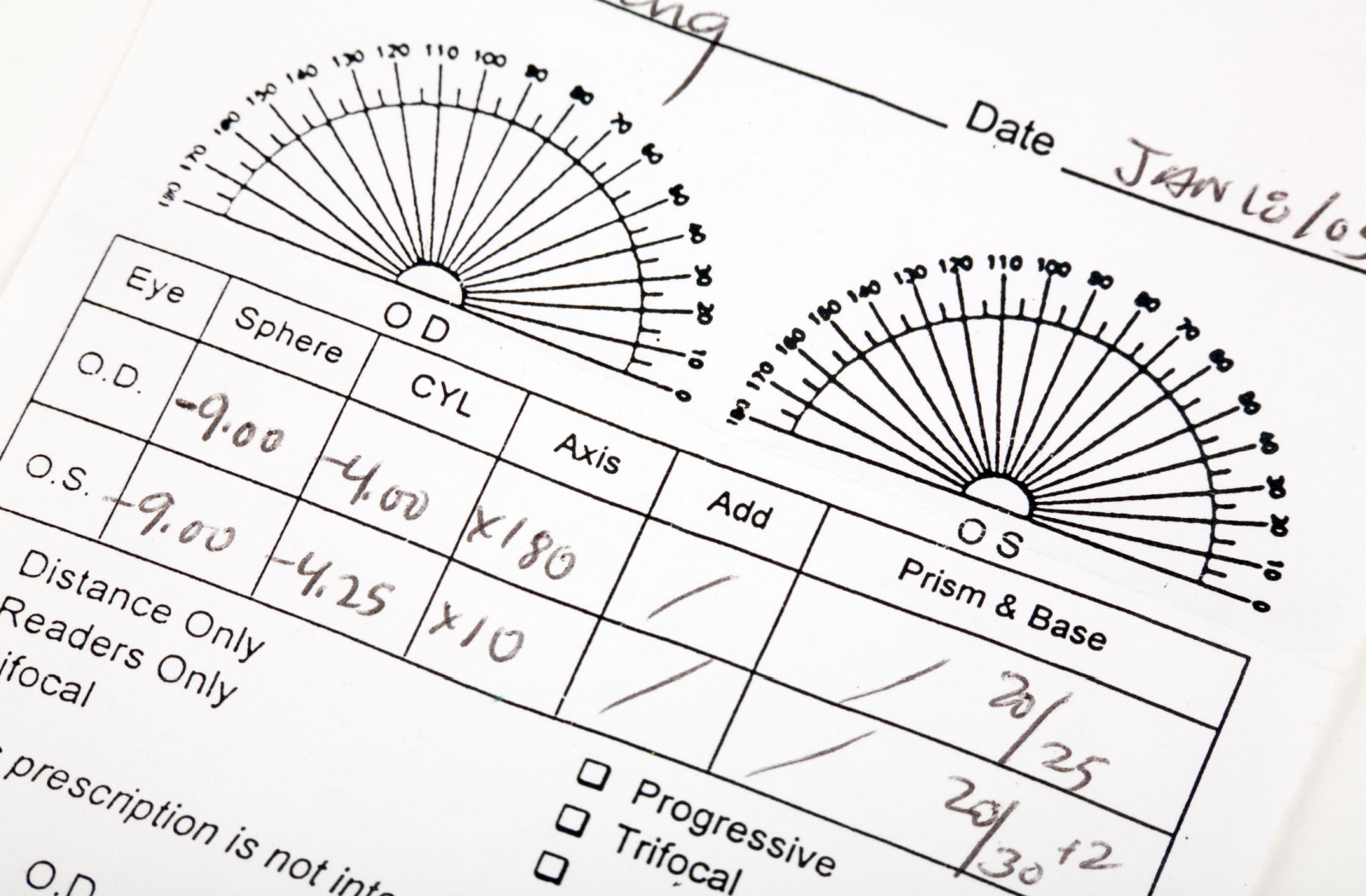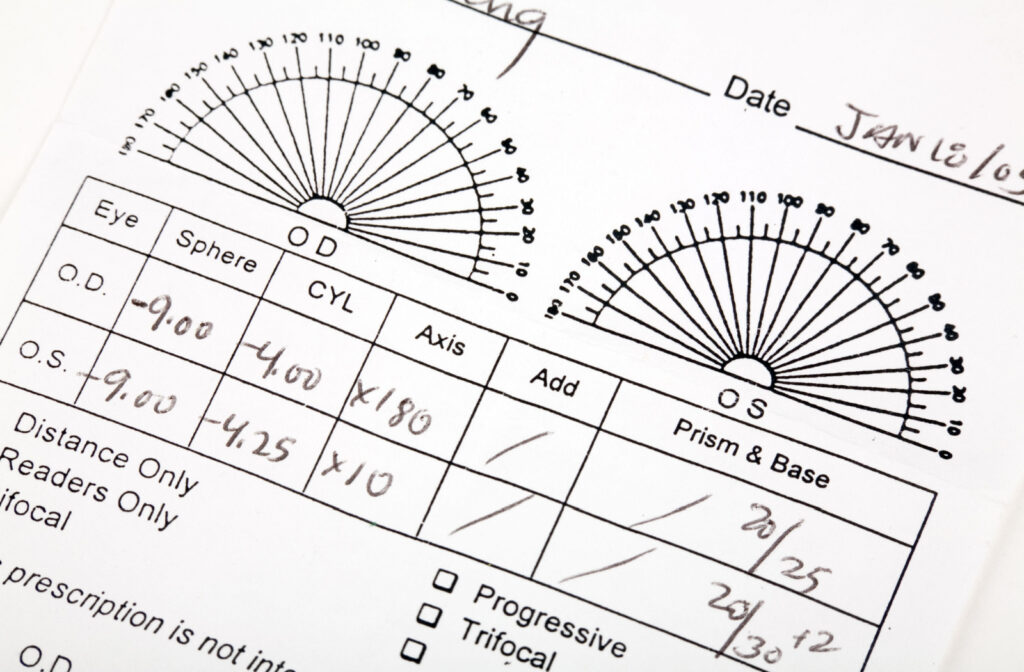As someone who wears glasses, it becomes imperative to maintain an updated prescription–this not only makes for better clarity but also accounts for any potential changes in ocular health over time.
To make sure your prescription is accurate, regular eye exams should be a part of your overall health care. These periodic eye exams with your optometrist can confirm whether your current prescription continues to meet your needs.
Expiration Date for Prescription Glasses
There is no universal standard for the duration of a glasses prescription. Its validity can depend on various factors including your age, eye health, medical history, and more.
Generally, prescriptions in the United States are valid for a minimum of one to two years.
Importance of Regular Eye Exams
Regular eye exams are necessary even when your prescription glasses are still effective. With these exams, optometrists can monitor any changes in your eyesight that may necessitate an adjustment to your prescription.
It’s important to note that children and older adults may need more frequent exams.
Children’s eyes are still developing, making regular exams essential. Eye exams should be conducted between 6-12 months, at ages 2-3 years, again at 4-5 years, and annually from age 6 onwards. These regular exams can help identify and treat vision impairments early.
On the other hand, the vision of older adults tends to alter more frequently. As such, the American Optometric Association advises annual eye exams for everyone over 60. Vision changes can also be a signal of other health issues, reinforcing the importance of these appointments.
Medical Conditions Can Affect Prescription Validity
The validity of your prescription might not extend to the standard one to two years–or for citizens of Florida, five years–if you’re contending with specific health conditions.
For instance, suppose you’re managing diabetes, hypertension, or any other chronic condition that could potentially impact your vision.
In such situations, it’s not uncommon for your optometrist to suggest more regular eye exams and frequent updates to your prescription.
Similarly, if you’ve undergone any form of eye surgery such as LASIK, they’d likely advise more routine exams. It’s all part of ensuring optimal eye health.

Glasses Prescription vs. Contacts Prescription
It’s important to take note that a prescription for contact lenses differs from one for eyeglasses. Contact lenses, sitting directly on the eye, require more frequent evaluations for potential changes in fit or health risks.
It’s essential not to overlook the expiration dates of contact lens prescriptions. Ignoring these could lead to issues such as allergic reactions, eye infections, and even corneal scratches or ulcers.
Are Contact Lens Prescriptions the Same as Prescription Glasses?
You might be wondering if your contact lens prescription can be used for prescription glasses. Unfortunately, the answer is no. Contact lenses must conform to the eye’s curvature, while eyeglasses are adjusted for unique features such as the nose bridge and ear height.
The fitting process for contacts is consequently more complex. They necessitate precise measurements to ensure proper fit and vision correction. This specificity is why a glasses prescription isn’t suitable for contacts.
Insurance Coverage & Prescription Expiration
At The Eye Avenue, we’re set up to accept a wide range of insurance plans, giving our patients that extra bit of peace of mind when it comes to eye care costs. Navigating the world of insurance can be tricky, but our well-informed staff is here to help you make sense of your vision coverage.
If you don’t have insurance or are dealing with a high deductible, we’ve got alternatives for you. Please feel free to call our office for more information. We’re also set up to accept Care Credit and FSA/HSA.
To make care affordable for all our clients, we’ve joined forces with Scratchpay. With immediate approvals and plans as low as 0% APR, making financial decisions doesn’t have to be hard. And don’t worry – searching for a plan with us won’t impact your credit score.
When you’re thinking about getting new glasses, your insurance coverage can make a difference. Whether or not your prescription is still valid is a big factor. If it’s out of date, there’s a chance you’ll be covering the bill for those new glasses all by yourself.
Remember, not every insurance plan is cut from the same cloth. They might have their own set of rules and timelines about when they consider a prescription valid. So, it’s always smart to touch base with your provider. That way, you’ll know exactly what’s covered.
How to Read Your Eyeglass Prescription
An eyeglass prescription might seem like it’s in a different language, but there’s no need for concern. That piece of paper filled with tiny symbols is not as perplexing as it appears. So, what do the letters on your prescription mean?
Feel free to follow along with your prescription in hand to understand what each letter means, and when in doubt, reach out to your optometrist with any questions or have them guide you through your prescription.
- OD, or oculus dexter, means right eye–a Latin term meaning dexterous.
- OS, or oculus sinister, means left eye.
- SPH is shorthand for sphere, which refers to the lens power recommended for nearsightedness or farsightedness.
- CYL is shorthand for cylinder and refers to the type of correction your eyes need in a particular direction.
- AXIS indicates where the cylinder correction goes.
- CYL and AXIS have to do with astigmatism, a common imperfection of the eye that means the shape isn’t quite round, resulting in blurry vision.
- ADD is short for addition and refers to the magnification amount needed in the lens. Usually for people who need reading glasses, bifocal or multifocal, or progressive lenses.
- PD means pupil distance and refers to the distance from the center of one pupil to the center of the other pupil, determining where the clearest part of the lens will be. Accurate recording of the PD is essential to avoid prescription errors.
- PRISM refers to a part of the eyeglass prescription. It’s used when your eyes need help aligning properly. The prism shifts the image either up, down, in, or out to help your eyes focus together and reduce issues like double vision.
How Long Do Eyeglass Prescriptions Last?
The duration of your glasses prescription isn’t a fixed term; it varies based on several factors like your age, overall eye health, and whether you’re using contacts or glasses. Typically, your glasses prescription remains valid for one to two years, but it may differ depending on the state you reside in.
It’s important to remember to schedule regular eye exams and adhere to your optometrist’s recommended timetable for updates. This practice not only helps maintain your vision clarity but also uncovers any potential eye issues early on, ultimately contributing to your eye health.
Visit Us for an Updated Prescription
The Eye Avenue is committed to making sure your vision is at its peak. Don’t hesitate to schedule an appointment with us today–we even have virtual appointments! We’re more than ready to cater to all your vision needs.




